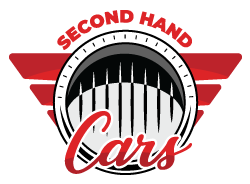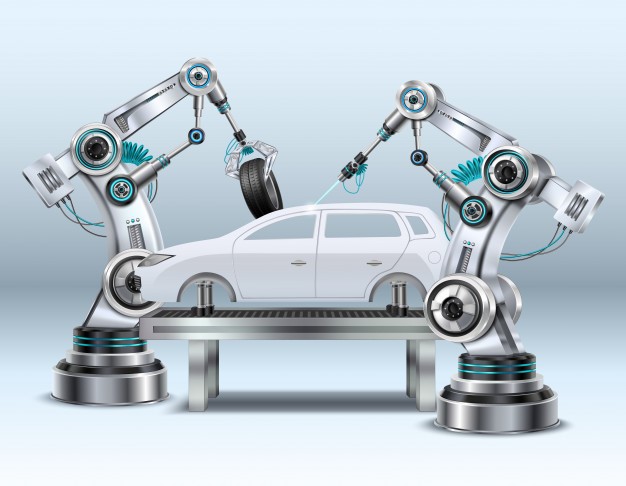Cars are the very product of technology; this is as true for the very first Model T Ford as it is for any modern vehicle.
They came about as the result of mechanical and autonomic advancements and have ridden on that road ever since, always taking advantage of each new revolution in technology.
These developments have always also permeated every aspect of the motor industry, from design and manufacture right through to sales and aftermarket services.
And even today we see developments and shiny new technologies come out on the daily, each with their own influence on the entire industry.
Those automotive businesses that have kept up with each trending change as it happens, have reaped the greatest benefits, purely thanks to the technical nature of the entire industry.
And those that are doing so right now are getting a competitive edge, creating better workplaces, and retaining more satisfied clients, whether they are in the market for second hand cars, or new ones.
Understanding the relationship between technology and all aspects of the motoring industry is key to running a sustainable automotive business, regardless of the sector you operate out of.
So, if you are interested in improving the performance of your motoring business, here is a little bit about just how important new and emerging tech is for it.
A Quick History of Automation and Tech in the Motor Industry
Let’s start with a little bit of background, because the history of the motoring industry is a long one, that has come to what it is thanks to a collection of small but significant breakthroughs.
From the very concept that Henry Ford once had to produce a product that his own workforce could afford (through a simple form of automation), right through to the ‘co-bots’ we see in modern car factories to improve safety and efficiency, every noticeable moment in automotive history has been brought about thanks to a technological breakthrough.
Automation has been the area with the most noticeable change, gradual though it has been.
Even the very first mass production factory floor, which was all but completely reliant on human activity, can be considered the starting point for some pretty amazing advancements to come.
And even way back then, in the heat of the automotive boom, those companies that took these technologies for passing fads, simply faded away into obscurity while their savvy competitors took things to a new level.
Then there are developments that have become standard design components for vehicles across the board.
It’s difficult to remember sometimes that things like windshield wipers, electric starters and air conditioners were once probably considered a luxury.
Where are those manufacturers who thought they wouldn’t need them now?
It has come so far that we are seeing the rise of self-driving cars on the horizon.
And while the tech isn’t quite ready yet, savvy manufacturers are already looking at how they can make the next best one.
Will self-driving cars be the next big era of the automotive industry?
While nobody really can tell, it certainly looks like it.
But while the history of technological development is richest in the manufacturing sect of the industry, there is plenty to be said about what is coming in all the other fields.
How Tech Drives Automotive Design
Even the process of conceptualisation and design is reliant on technological developments.
The actual design process is done on ever advancing digital interfaces and sent through for prototyping. These can also be operated more efficiently thanks to ever advancing computer tech that can render and process designs more efficiently and with greater detail.
Prototyping itself has become far more efficient, cost effective and impactful thanks to the rise of 3D printing technology, which has permeated nearly every manufacturing and design industry over the last decade.
The ability to take a product blueprint straight from a design and have its components printed out has completely transformed the way that cars and their components are prototyped.
This has had an unprecedented affect on how efficiently these items can be produced, tested, changed and brought to market.
This has improved practically all areas of the automotive industry, allowing for rising demands to be met more easily, while also accelerating further technological advancements.
How Tech Drives Automotive Manufacturing
We touched very briefly on the nature of technological advancements in car manufacturing, but let’s talk about a few of the key operations taking place right now in this sector.
3D printing and CNC machining are also at the heart of production, allowing manufacturers to produce parts in less time, with less effort and at less of a cost than ever before.
In the case of 3D printing, the tech has started to broaden in terms of the materials it works with, now allowing all manner of car parts to be produced.
Some manufacturers also rely on CNC machining, which is a subtractive production process, whereby lathes and cutting machines are given a digital design of a component in a CAD file and get to work creating them automatically.
Automation in the manufacturing sect is a huge driving force in the motor industry. And there are many ways that it is being done while also ensuring the security (and safety) of workers in these factories.
These solutions are often referred to as ‘co-bots’ or cooperative robots. Systems of automation that have been designed to streamline production alongside human workers, while greatly enhancing the overall efficiency and safety of the facility.
How Tech is Improving Aftermarket Auto Services
Even once cars have been driven off the showroom floor, even those companies that are simply related to the motoring industry are finding ways to make their processes more efficient and effective using evolving technology.
Underwriters, for instance, have been able to quicken the time it takes to finalise insurance contracts and claims thanks to the Internet of Things (IoT) which has given handheld devices the ability to capture essential data about a vehicle and relay it directly to insurance firms.
This has significantly reduced the amount of time it takes for claims to be made by customers, has provided insurers with a means to offer a much better service when underwriting.
This has been extended to services for repairs, replacements and maintenance in workshops, where developing technologies have allowed workshop owners to get more detailed insights into tasks that improve vehicle performance, safety and reliability.
Even something that seems relatively simple, like setting up client databases and customer profiles to better track their service and maintenance needs has made small transformations in the industry. Many workshops have even used tech to set up loyalty programmes that have increased customer retention substantially.
This type of tech, as well as the influence that the internet has had on just about all industries (thanks to marketing on search engines), has also made it easier for clients to find the services they need for their vehicle more easily, which has improved customer relations for these types of facilities greatly.
How Tech is Driving Quality Leads & Sales
Of course, it isn’t just the manufacturers and mechanics who have been benefiting from the gradual advancement of automatic and digital systems.
In fact, dealerships are now seeing the emergence of new and powerful sales platforms that give a uniquely competitive edge in the market.
The tech I am talking about stems from a few of the concepts laid down by e-commerce or online shopping. They allow customers to search online for new or second hand cars directly from their phones or computers, which does a lot more than simply make things convenient for them.
This, naturally, has several benefits for the dealers that use these platforms.
For instance, it lessens the need to conduct advertising that goes out and finds customers, since it uses tech to help interested people find dealerships themselves.
Another thing that these platforms do is even out the competition between participating dealerships, since they share a space on the platform, which recalls results when a specific vehicle being searched for, can be found at one of the dealerships using the platform.
Of course, these types of platforms seek to keep things competitive for the dealers involved, and so they often limit the number of dealers that represent any single neighbourhood.
One such platform is SecondHandCars.co.za, an easy to use website that your potential customers can search through to find out more about what you have on offer. For those dealerships that specialise in selling used cars, this presents a powerful way to bring quality leads into your showroom.
The app can track what you have on the floor and will direct any nearby customer looking for that vehicle, if they are searching in your area.
The platform doesn’t stop there, however, it also collates several related services for vehicles. This adds value to the platform and gives a one-stop approach to motor needs for your customers.
For instance, they can use the website to be put into contact with specific types of services like mechanics, auto-electricians or panel-beaters. It can even put your clients into contact with partnered insurers like King Price.
But beyond this, let’s talk about what it does for the sale.
Your customers will be directly searching for what you have and will be able to get all the details on age, make, model, specifications, price and mileage all from the site.
This has improved sales significantly for those dealerships that have opted to use services like those offered by Second Hand Cars. In the digital age that we live in, finding new ways of allowing your potential customers to contact you is invaluable, especially in an industry as competitive as the motoring one.
Furthermore, your customers are becoming accustomed to the way shopping is done in the digital age; which is to say that they are browsing for goods, researching them and making purchases online, at their convenience.
The more this goes on, the more it becomes an expectation. And as more and more dealerships follow suit, the expectation that customers have for convenience will only rise as well.
Tech like that offered by Second Hand Cars also represents a fast-growing global trend of ways of selling vehicles that are improving sales in a cost-effective way. Fortunately for South African dealerships, the tech is still new on the local market, which presents an exceptional way to get a more competitive edge over other dealerships.
Get Listed on Our Used Engine Search Engine
Your dealership can take its sales force and profitability to the next level by being one of the first to leverage the kind of technology offered through the Second Hand Cars website.
If you would like to know more about getting your dealership listed on our index, be sure to get into contact with a representative from SecondHandCars.co.za today, or visit our website for additional details.

